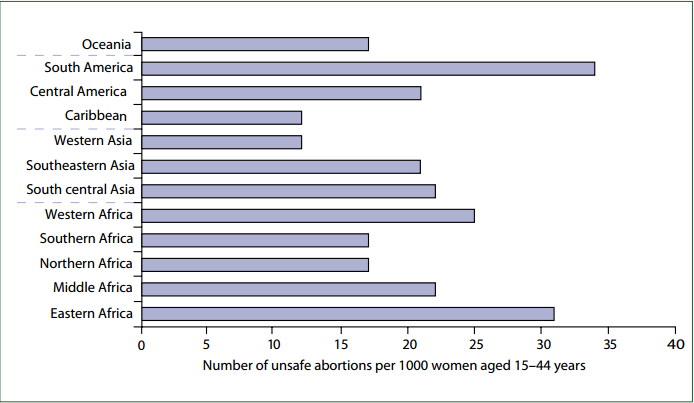Ever since abortion became legal as a procedure, it started to attract social attention as one of the major issues of ethical, public health, civil rights, political, and worldview character. While the history of abortion in the United States is thought to begin in the 1970s, it is actually much longer and goes back to 1800s (National Abortion Federation par. 1). However, while being legal at the beginning of the 19th century, abortion represented a rather dangerous practice that was commonly performed by unlicensed individuals (National Abortion Federation par. 1).
In fact, the regulations of abortion were imposed by the health care organizations of the time in order to limit the illegal practice of the procedure endangering many women on a daily basis (“The Abortion Debate” par. 2). Today, the American and the world’s societies are still clashing over the pro-life and pro-choice perspectives on abortion. Also, abortion is still performed in unsafe settings by uncertified practitioners putting the lives and health of women who are pro-choice in danger (Charbonneau par. 3).
As reported in The Guardian, the practice of unsafe abortion has risen over the last couple of decades; to be more precise, the majority of such procedures performed in Latin America and Africa (95% and 97% accordingly) are unsafe, the rates of dangerous abortions are also high in Asia (40%) (Boseley par. 1). The research conducted by Guttmacher Institute and the World’s Health Organization showed that the rates of abortion fell in the decade between 1995 and 2005 by about 4 million cases a year (Singh et al. 16).
This tendency is attributed to the increase in illegal abortions that cannot be registered in the official medical records (Singh et al. 16). Also, it is present in every part of the world; however, it is much more significant in the developing countries (Picture 1). Statistically, almost 50% of all the abortions in the world are unsafe (Boseley par. 3).
One of the reasons for this phenomenon is the scarcity of contraceptives due to the population growth. The proposed solution to this global problem is the establishment of teams of volunteers for the delivery of contraceptives (condoms and implants) to the parts of the world in need. With the measures in place to prevent unwanted pregnancies, the number of women seeking the help of the uncertified abortionists and dangerous ways to end a pregnancy is likely to decline.
Referring to unsafe abortions as to a “preventable pandemic”, Grimes et al. note that it “mainly endangers women in developing countries where abortion is highly restricted by law and countries where, although legally permitted, safe abortion is not easily accessible” (1). Based on this statement, it becomes clear that the controversial practice of abortion has many cultural and social implications in different countries depending on their dominant mentality. However, contraception makes a cultural impact as well; that is why, in many cultures, it may be challenging to address the issue, but it can be minimized on a global level.
As a professional graduate nursing student, I have learned about many negative consequences of unprotected sex and unsafe abortion is one of them. Also, I have encountered people with opposite perspectives on abortion who required appropriate approaches matching their views. The attitudes toward this issue differ around the world or even within a single country, but due to globalization, the cultures and societies are able to impact one another. I believe that through the understanding of the other cultures’ views and beliefs, public health professionals could find a way to address the problem of unsafe abortions without clashing with important worldviews.

Works Cited
Boseley, Sarah. Unsafe abortions rising globally. 2012.
Charbonneau, Christine. Abortion and Maternal Health: The Global Health Crisis No One Is Talking About. 2015.
Grimes, David, Janie Benson, Susheela Singh, Mariana Romero, Bela Ganatra, Friday Okonofua, and Iqbal H. Shah. “Unsafe abortion: the preventable pandemic.” The Lancet Sexual and Reproductive Health Series (2006): 1-10.
National Abortion Federation. History of Abortion. 2015.
Singh, Susheela, Deirdre Wulf, Rubina Hussain, Akinrinola Bankole, and Gilda Sedgh. Abortion Worldwide: A Decade of Uneven Progress. New York, New York: Guttmacher Institute, 2009.
The Abortion Debate. 2005.